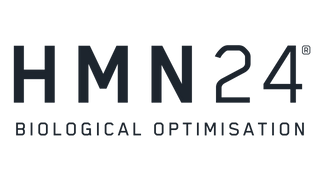It wasn’t built to support human physiology.
It was built to stimulate it, fast, hard, and often.
Let’s rewind.
It started with Lucozade, initially developed in the 1920s to support ill patients by delivering a quick glucose hit. For decades, it was a medical product, found at hospital bedsides, yet sold on shelves everywhere as “energy.”
Then came Gatorade, created to rehydrate athletes at the University of Florida, focused on sodium, potassium, and glucose replenishment.
These drinks weren’t designed for lifestyle energy; they were built for acute physiological restoration.
Their application was wrong.
But the 1990s changed everything.
Scientific consensus began to shift. Sugar wasn’t just energy, it became a metabolic risk. Excess glucose intake was now linked to obesity, Type 2 diabetes, systemic inflammation, and chronic disease.
Suddenly, what was once marketed as fuel became lumped in with junk food culture.
So the market adapted.
From Glucose to Grind
As sugar fell out of favour, caffeine rose in its place, positioned as a cleaner, calorie-free solution to fatigue and underperformance.
Unlike sugar, caffeine came with scientific legitimacy,
- Enhanced alertness
- Faster reaction times
- Reduced perception of effort
- Proven performance benefits for body and brain
And it slotted perfectly into culture.
The late 1990s and early 2000s gave rise to coffee as identity.
Starbucks, Nespresso, and the boutique café boom turned caffeine into a daily ritual and a badge of ambition.
You weren’t just drinking coffee, you were hustling. You were building a performance 'routine' into your day.
Intricate coffee-making methods (e.g. pour-over, siphon, Chemex, espresso pulling) introduced precision, patience, and personalisation, transforming coffee into an intentional experience. This ritualistic element aligned with lifestyle identity, mindfulness, and artistry.
You were a founder, a freelancer, a biohacker, a night owl, a creator.
Function blurred into habit,
Physiological demand was replaced by behavioural default.
Then Came the Energy Drink Era
Red Bull, Monster, and countless others rode the wave, offering portable stimulation, hyper-branded for speed, success, and sleeplessness.
Taurine, caffeine, sugar, and B vitamins.
Designed for students, gamers, athletes, shift workers, and anyone who needed “wings.”
The narrative was clear: more wakefulness = more output.
They targeted the sleep-deprived, output-driven populations with free samples.
But there was a cost,
The Downside, Disruption, Fatigue, and Dependence
Caffeine, especially when consumed without restraint or rhythm, became a problem,
- Increased sleep latency
- Suppressed REM sleep
- Cortisol dysregulation
- Rebound fatigue and tolerance
What started as a tool became a trap,
People weren’t just energised, they were overstimulated, under-recovered, and locked into a cycle of fatigue and compensation.
Then Nootropics Arrived
Enter the age of smart compounds, promising clean focus, sharper memory, and mental resilience.
Popularised by Silicon Valley, the wellness elite, and high-performance circles, these products were introduced,
- Adaptogens (e.g., Rhodiola)
- Choline donors (e.g., Citicoline)
- L-Tyrosine, L-Theanine
- Mushroom extracts and racetams
Nootropics had more science, more nuance, and less crash.
But they still missed a fundamental truth.
Timing matters
Even the most advanced nootropic stacks were,
- Taken on demand, not in sync with biological rhythms
- Used late in the day, leading to overstimulation and disrupted sleep
- Designed for acute effect, not long-term physiological coherence
Once again, performance was pursued at the expense of alignment.
HMN24, We’re Not Here to Play That Game
We didn’t come to market with a stronger caffeine hit or a bigger nootropic stack.
We came to rebuild the space entirely, with science, rhythm, and precision.
Our foundation is Circadian Modulation.
We don’t just stimulate, we synchronise.
We don’t just support focus, we structure it into your biology.
Every ingredient. Every serving. Every protocol.
Timed to your internal clock, not your calendar, not your to-do list.
Why This Matters
Because your performance is rhythmic.
So is your:
- Sleep architecture
- Neurotransmitter balance
- Hormonal output
- Metabolic function
- Emotional regulation
Disrupt that rhythm, and everything starts to crack, no matter how strong your coffee or how clean your stack.
HMN24 Is a System, Not a Stim
We’ve built a multi-phase, neuroscience-led protocol trusted by,
✔ Formula One teams
✔ Special operations units
✔ Global executives
✔ Jet-lagged high performers
✔ High-pressure thinkers and doers
It’s Informed Sport certified.
It’s built for function, not hype.
And it’s designed to help you perform, recover, and repeat, without the crash.
We didn’t invent the category.
We’re rebuilding it, with biology, not buzz.
If you’re ready for what comes after sugar spikes and stimulant crashes.
We’re ready to talk.
Blog posts
The Science Your Meeting Room Is Getting Wrong
Most meeting rooms are designed for convenience, not cognition. Rising carbon dioxide, poor ventilation and environmental load quietly shut down the human brain long before the meeting agenda does. This article breaks down the science and explains why performance starts with the air we breathe.
Gym Equipment Manufacturers, Gym Spaces, and Why They Need to Adapt
The fitness industry is undergoing its biggest transformation in decades. Gym equipment manufacturers can no longer rely on selling hardware alone — modern users demand outcomes, evidence, personalised systems, and environments that support real human performance. This article explores the data, science, and commercial forces driving this shift.
The Hidden Architecture of Sleep: Why Three Microclimates Determine How Well You Rest
You don’t sleep on a mattress, you sleep inside three thermal microclimates that sit between your body, your clothing and your bedding. These microclimates determine how quickly you fall asleep, how deeply you stay asleep and how well you recover. This piece explains the science, the technologies that improve it, and how to optimise your environment even without tech.







